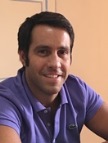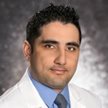Day 2 :
Keynote Forum
Christine Gasperetti
Pennsylvania Hospital, USA
Keynote: The hope of greatly reducing cancer fatality is getting to be realized
Time : 10:00-10:40

Biography:
Christine Gasperetti is an interventional cardiologist with interests in high risk and protected coronary intervention as well as acute myocardial infarction. She has been involved in many studies of coronary artery disease and determinants of platelet function during coronary intervention. She is affiliated with the University of Pennsylvania Health System and works at several of their hospitals and affiliates.
Abstract:
Keynote Forum
Alessandro Delitala
University Hospital of Sassari Italy
Keynote: Beta stiffness index in euthyroid subjects: The role of free thyroxine
Time : 11:00-11:40

Biography:
Abstract:
Keynote Forum
Kunlun He
Chinese PLA General Hospital, China
Keynote: Kv4.3 Modulates the distribution of herg
Time : 12:20-13:00

Biography:
Abstract:
Kv4.3 modulates the distribution of hERG
Keynote Forum
Danish Abbasi
Atlanti Care Regional Medical Center, USA
Keynote: Rare cRare cardiac manifestation of a commonly prescribed drug: Takotsubo cardiomyopathy caused by allopurinol induced Dress Syndromeardiac manifestation of a commonly prescribed drug: Takotsubo Cardiomyopathy caused by allopurinol induced dress syndrome
Time : 14:00-15:00

Biography:
Abstract:
- Clinical Cardiology | Heart Diseases & Heart Failure | Interventional Cardiology | Cardiac & Cardiovascular Research | Clinical Case Reports on Cardiology

Chair
William J Rowe
Medical University of Ohio, USA

Co-Chair
Manuela Stoicescu
University of Oradea, Romania
- Clinical Cardiology | Heart Diseases & Heart Failure | Interventional Cardiology | Cardiac & Cardiovascular Research| Clinical Case Reports on Cardiology

Chair
William J Rowe
Medical University of Ohio, USA

Co-Chair
Manuela Stoicescu
University of Oradea, Romania
